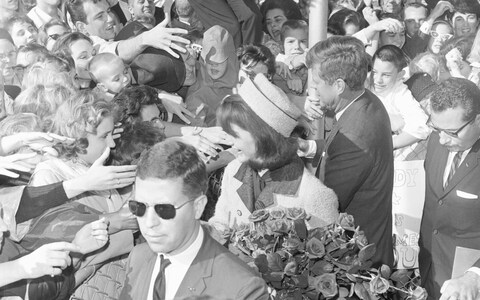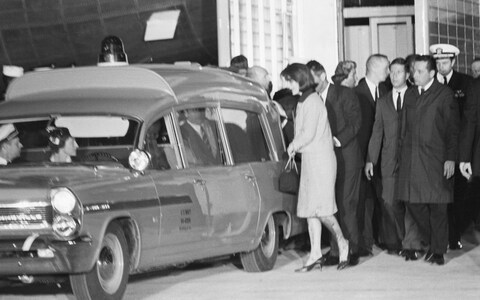Secret service agent who witnessed JFK’s assassination casts doubt on ‘magic bullet’ theory
A secret service agent who was just feet away from John F Kennedy when he was assassinated claims he found the “magic bullet” but it got misplaced, in a curious intervention that raises questions about a second shooter.
Paul Landis who was standing on the running board of the car behind the president, also said he heard two extra shots during the 1963 Dallas attack.
Mr Landis, who never testified to the commission into the assassination, said he picked up the bullet from the back seat of the car where JFK had been sitting, and placed it on the president’s stretcher for investigators to examine.
But somehow the bullet ended up on Texas governor John Connally’s stretcher, fuelling the “magic bullet” theory that it passed through Mr Kennedy and hit Mr Connally.
The government’s Warren Commission originally concluded that the bullet passed through the president’s throat before hitting Mr Connally’s shoulder, ribs, wrist and thigh.
It forms part of the official findings that a single bullet was responsible for Mr Kennedy’s neck wound, and all the injuries suffered by Mr Connally have long been considered vital for its conclusion that the assassin, Lee Harvey Oswald, acted alone.

Mr Landis quit the secret service six months after the shooting, traumatised, and refused to engage with the investigation or any material about the shooting.
Now 88, Mr Landis has written a memoir, which is at odds with many of the official findings on what remains one of the most enduring mysteries.
Mr Landis was tasked with protecting the First Lady Jackie Kennedy, and recalls having to duck to avoid being splattered by brains.
Speaking about the bullet, he told the New York Times that he believed it was transferred from one stretcher to the other when they were pushed together.
“There was nobody there to secure the scene, and that was a big, big bother to me,” Mr. Landis said. “All the agents that were there were focused on the president.
“This was all going on so quickly. And I was just afraid that — it was a piece of evidence, that I realised right away. Very important. And I didn’t want it to disappear or get lost. So it was, ‘Paul, you’ve got to make a decision,’ and I grabbed it’.”

Mr Landis, whose memoir The Final Witness will be published next month, believes the bullet did not have sufficient velocity to go through Kennedy, let alone continue its improbable trajectory.
He said that is why it was found on the back seat, and another bullet was responsible for the wounds sustained by Mr Connally.
Until recently, Mr Landis had always accepted that Oswald – who was himself shot dead by Jack Ruby in a Dallas police station – was the sole gunman.
He is now less convinced, he told the New York Times.
“At this point, I’m beginning to doubt myself,” he said. “Now I begin to wonder. That is as far as he is willing to go.”
The Warren Commission concluded that Oswald fired three bullets from a Carcano M91/38 bolt-action rifle in 8.3 seconds.
However, Italian experts in 2007 found that the weapon was incapable of unleashing three bullets in less than 19 seconds.

Suggestions that a sole gunman was responsible for the assassination have been repeatedly challenged over the last six decades with a raft of conspiracy theories suggesting the assassination was orchestrated by – among others – the mafia, the Vatican and Fidel Castro.
The president’s nephew, current presidential candidate Robert Kennedy Jr. – whose father Bobby Kennedy was also assassinated – has claimed that the CIA was responsible for his uncle’s murder.
Conspiracy theorists claimed that the CIA and anti-communists arranged the assassination to prevent the US from withdrawing from Vietnam.
However, files released by the US government in 2017 showed that a detailed trawl of official records by the CIA in 1975 found nothing to link Oswald with any official agency.
President Joe Biden has ordered the release of remaining records linked to the assassination and 2,672 files were released by the National Archive between April and June this year.
This article has been archived for your research. The original version from The Telegraph can be found here.


